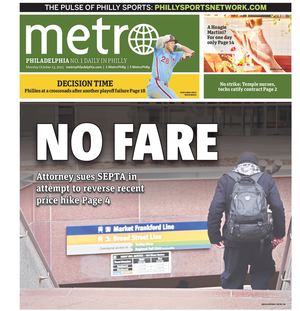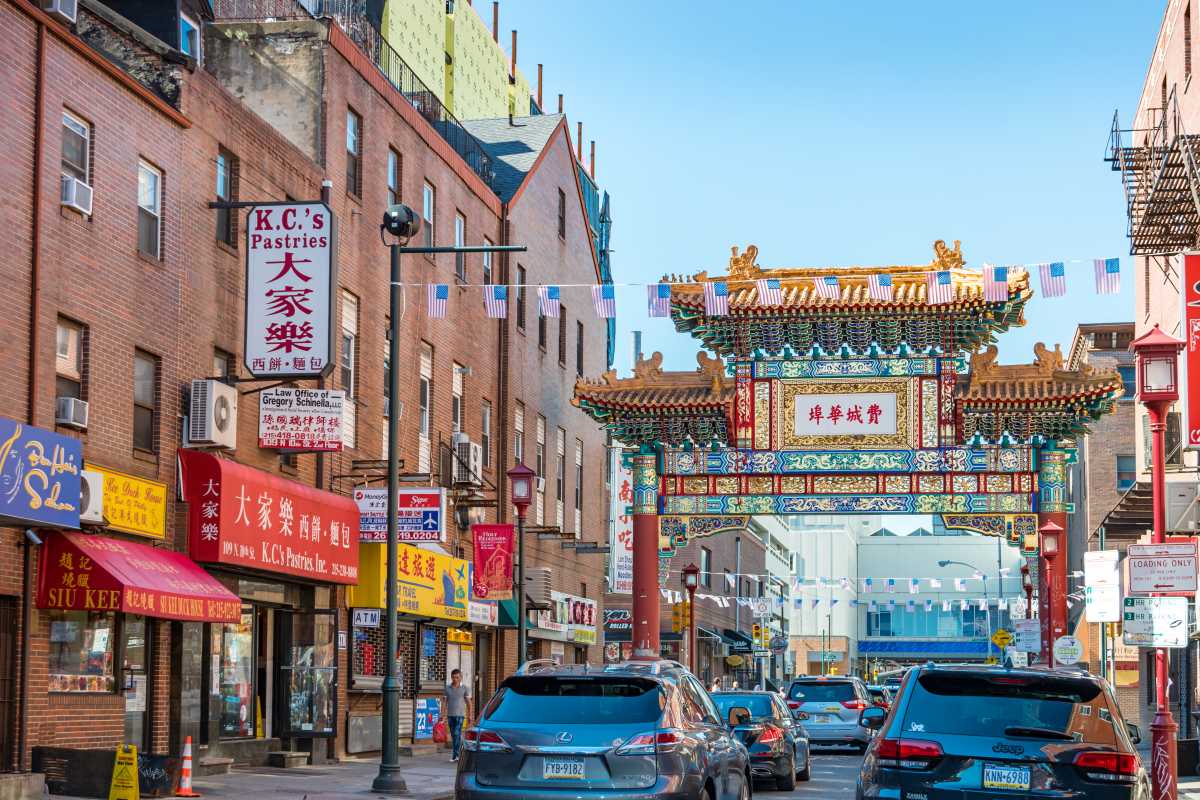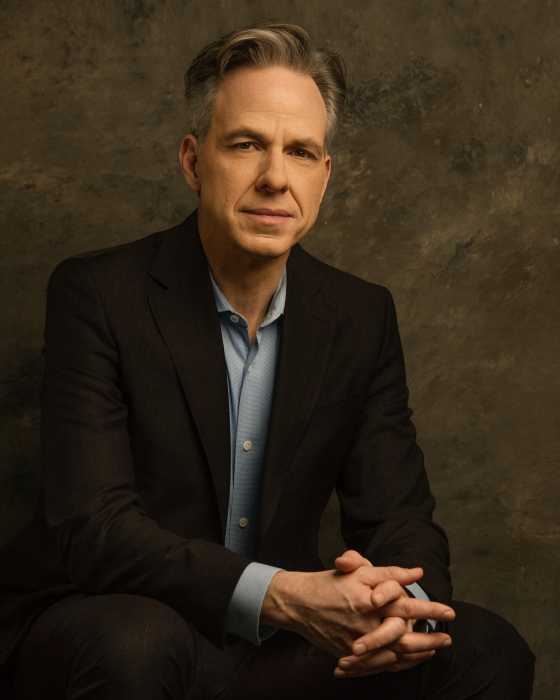Visitors commonly view Philadelphia’s Chinatown as a place to eat Chinese food and appreciate Chinese culture. But for longtime members of the Chinatown community, the neighborhood – home to over over 5,000 residents – is also defined by its tenacity and survival.
Chinatown’s rich tradition of activism was on full display for the past two and half years, as residents and allies fiercely opposed the Philadelphia 76ers’ plans to build a basketball arena in the Market East neighborhood at the southern edge of Chinatown.
A city-sponsored community impact study found that the arena could have resulted in the “loss of Chinatown’s core identity and regional significance.” It estimated that half of the neighborhood’s small businesses would have suffered due to increased congestion, potential rent increases and a new demographic less likely to patronize the area’s ethnic businesses.
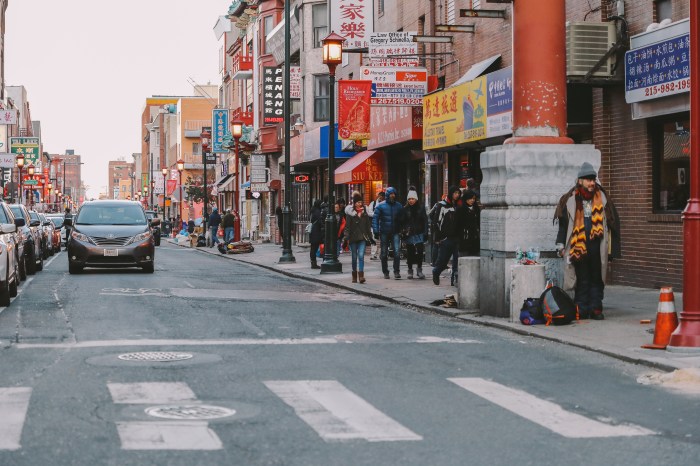
While the reason for the Sixers’ sudden decision to scrap the Market East arena plan remains unclear, the announcement in January 2025 came as a relief to Chinatown community members who felt they had averted yet another threat to their neighborhood’s existence.
I’m a historian whose research focuses on Asian Americans, cities and social movements, and I’ve seen how urban residents take the existence of Chinatowns in major cities across the country – and even globally, from London to Havana, Cuba, and Ho Chi Minh City, Vietnam – for granted. Chinatowns continue to exist and thrive thanks to the residents and allies who fight for them.
The fight over the Sixers arena was only the latest struggle in over 50 years of community organizing in Philadelphia’s Chinatown.
A refuge from xenophobia
Like other American Chinatowns, Philadelphia’s formed during an era of virulent anti-Chinese racism. The neighborhood was established in the 1870s as a refuge for immigrants fleeing the American West, where white railroad workers and miners declared “The Chinese must go!”.
Among the earliest businesses were a handful of laundries and a restaurant on the 900 block of Race Street, just north of Philadelphia’s main commercial district.
In the era of anti-Chinese immigration laws from 1875 to 1943, Chinatowns were associated with opium-smoking, gambling and prostitution. Law enforcement targeted and stigmatized the Philadelphia neighborhood as a center of vice and danger. Meanwhile, city and private developers had their eyes on Chinatown as early as the 1920s.
In 1923, the Bell Telephone Company purchased additional real estate along the corridor for its new high-rise building and parking lot, displacing Chinese residents. In the same decade, the city used eminent domain to demolish blocks of housing to make way for the Broad-Ridge Spur connecting the Eighth Street and Vine Street subway stations. A Philadelphia Evening Bulletin article in 1934 declared Chinatown to be “a thing of the past.”
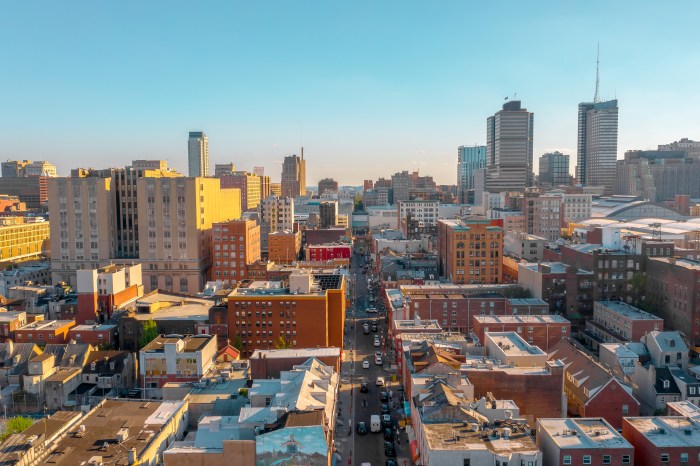
As the city began to accommodate more car owners, Race Street was remade as a major thoroughfare to the Delaware Valley Bridge, now called the Ben Franklin Bridge. In 1926, the year the bridge was completed, the Bulletin declared that “The Delaware River Bridge has come and Chinatown must go,” echoing the xenophobic slogans that drove Chinese workers out of western states half a century earlier.
But Chinatown persisted.
As restrictions on immigration from China loosened after World War II, more Chinese women immigrated to the U.S. The neighborhood transformed from a bachelor society of aging workers to a growing intergenerational community of families.
‘Save Chinatown’ movement forms
During the social upheavals of the 1960s and 1970s, Philadelphia’s Chinatown youth took inspiration from the Black Power and anti-war movements to fight for their community.
In 1966, the city proposed the expansion of Vine Street into an expressway that would have demolished large swaths of Chinatown, including the beloved Holy Redeemer church and school. Established for Chinese American Catholics in 1941, Holy Redeemer hosted neighborhood meetings and recreational events as well as religious services. The Vine Street Expressway project was one instance of the national phenomenon of urban renewal, which aimed to clear and redevelop areas designated as blighted.
The Philadelphia Chinatown Development Corporation nonprofit worked with Yellow Seeds, a group of radical Asian American youth who opposed U.S. racism and imperialism, and other Chinatown community members to fight construction of the expressway.
These groups comprised the 1970s Save Chinatown movement. They held numerous protests, made frequent media appearances and used the 1970 National Environmental Policy Act to craft their strategy. They demanded an environmental impact statement, which, when issued in 1983, recommended a much smaller expressway than originally designed. Holy Redeemer was saved. The final plans also scrapped two off-ramps that would have cut through the neighborhood. Construction on the expressway was completed in 1991.
Resisting a prison, baseball stadium and casino
The Save Chinatown movement continued through the decades as community members successfully fought the construction of a federal prison in 1993, a baseball stadium in 2000 and a casino in 2008 – all proposed for sites in or bordering Chinatown.
“The future of Chinatown is going to be a huge battle,” activist Debbie Wei stated in a 2002 documentary released after the conclusion of the baseball stadium fight a few years earlier. “We’re going to fight it, and my children are probably going to have to fight it as well.”
Her words were prescient. Her daughter Kaia Chau emerged as a key leader of the campaign against the Sixers arena 20 years later.
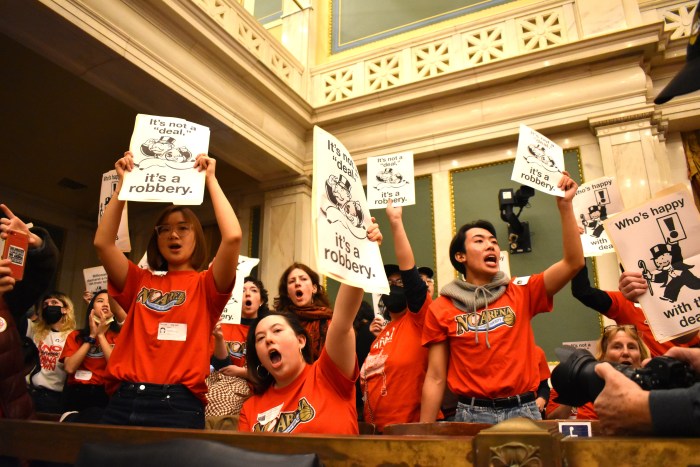
Chau co-founded Students for the Preservation of Chinatown with fellow student leader Taryn Flaherty. The group organized teach-ins, galvanized Philadelphia-area students to join protests, and highlighted arena developers’ ties to local universities, including the University of Pennsylvania and Drexel University. By focusing on the developers, students made connections between the arena proposal and the gentrification of West Philadelphia, including the demolition of the University City Townhomes, an affordable housing complex whose residents were mostly Black.
The movement against the Sixers arena became part of a multiracial, citywide fight against displacement. As Rev. Gregory Holston of Black Philly 4 Chinatown, part of the Save Chinatown coalition, put it: “In North Philadelphia, in West Philadelphia, in South Philadelphia, the same process is happening over and over and over again, where people are pushing and displacing people of color out of this city.”
Thriving intergenerational community
Activists have also created new housing, educational and arts institutions to keep Chinatown a family-friendly neighborhood.
The location where the prison was planned in 1993 is now Hing Wah Yuen, a 51-unit mixed-income affordable housing complex developed by the Philadelphia Chinatown Development Corporation – the same organization that led the fight against the Vine Street Expressway in the 1970s.
After the plans for the baseball stadium were scrapped in 2000, the grassroots Chinatown-based organization Asian Americans United partnered with the arts and culture organization Philadelphia Folklore Project to found the Folk Arts-Cultural Treasures School in 2005.
The K-8 school, located in the footprint of the proposed stadium, teaches Mandarin and emphasizes art and music classes that reflect students’ cultural background.
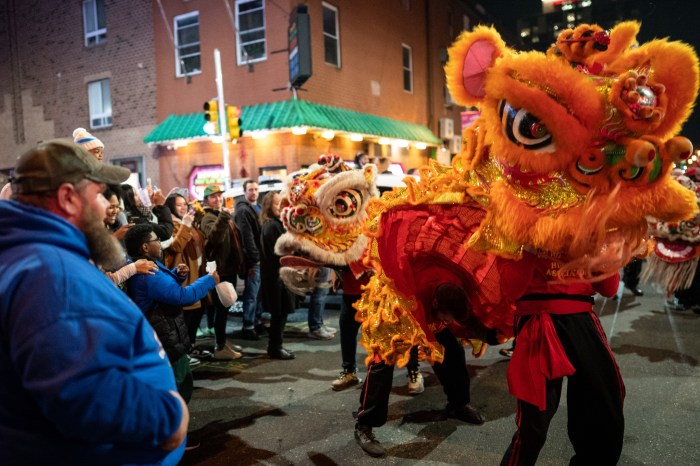
More recently, recognizing the need for more “third places” for youth beyond home and school, student leaders Chau and Flaherty launched the Ginger Arts Center in 2024. The organization provides a recreational space and arts programs for young people in Chinatown.
The community institutions that have sprung up in the wake of defeated development projects illustrate how Chinatown is not a thing of the past, nor is it solely a food and culture destination to be consumed.
Rather, Chinatown is a thriving community that has long fought to survive, reinvent itself and determine its own future – one that carries the legacy of previous generations of resistance.
